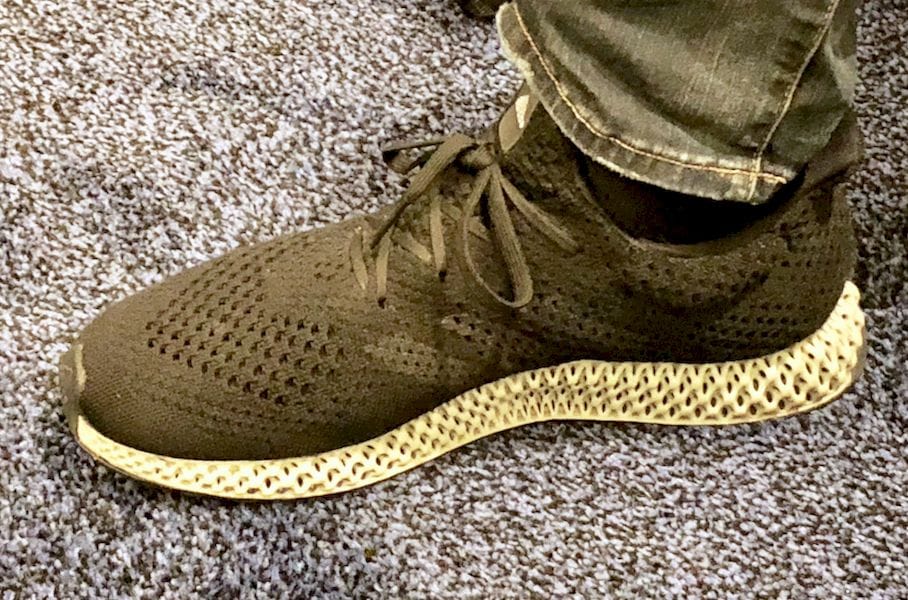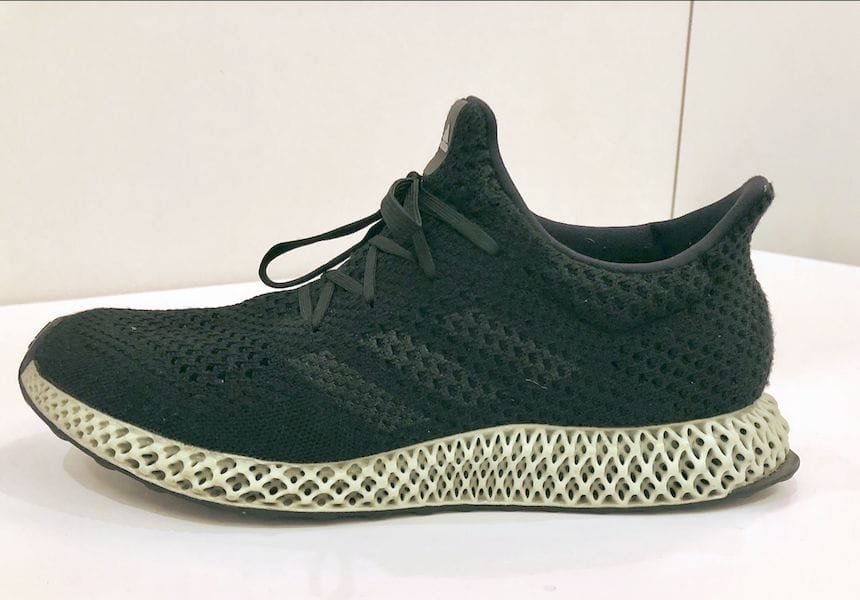Today might be a bit of a milestone for 3D printing.
Why? Because today Adidas officially launches a new product that is the result of 3D printing technology: the FUTURECRAFT 4D, a high performance shoe.
We all knew this was coming, as Carbon and Adidas have telegraphed their plans for some time. But today is that day, as the shoe is being sold to the public in the NYC area through retailers KITH, Packer and SNS.
Why is this a milestone? There are several notable aspects to this particular product launch:
- It is perhaps the first time a major, well-known brand has launched a product that is mostly 3D printed
- It is a product that could not have been produced in any way other than 3D printing with advanced software 3D design tools
- The advanced technology is entirely visible to even the most casual observer; this is science fiction stuff
- It is a production 3D printed product, not merely a prototype, from a major manufacturer
- It serves as an example to all other consumer product manufacturers that products can indeed be radically different

And finally, I think this is only the beginning of a new wave of astonishing 3D printed consumer products that will eventually become the norm.
The FUTURECRAFT 4D is made of a lower, upper and most importantly 3D printed midsole, where all the action takes place when using the shoe. As is clearly visible, the midsole is composed of a dizzyingly complex lattice of airy structure. This lattice is not randomly generated, but instead has a purposeful design that meets both technical and aesthetic requirements.
The midsole lattice is designed to be as light as possible, yet provide the shock absorption and bounce required for an optimum run. If you look closely, you’ll see the lattice form varies from point to point within the midsole.

We managed to get a very close look at this very shoe before launch and indeed the shoe is incredibly light in your hand, and I presume your feet as well.
The FUTURECRAFT 4D shoe looks normal until your eyes catch the lattice, and then you cannot take your eyes off them.
This type of design has, up to now, eluded almost all product manufacturers, simply because of its complexity. Even though many 3D printers in the past might have been able to produce the shape, they would have had cost, efficiency and issues with durable materials. Now that those issues have been solved by several vendors, the software tools to create the complex structures has been missing, as well as even the comprehension that this can be done.
Carbon has been developing sophisticated generative software specifically to enable companies to more quickly create these highly complex lattices. They’re derived from the mechanical properties desired in the end product, and generated appropriately. That, really, is the advantage of 3D printing in this environment.
The idea is that once companies see the advantages of these radically new product designs, they will be able to take action to make them happen. The Adidas example is likely going to be a big part of persuading other companies to undertake a 3D revolution.
It is the hope of Carbon, and people like me, that companies strongly consider using this technology to create the products of future. After all, the 21st century is now 18% over, so we’d better start seeing some science fiction products.
Via Adidas


